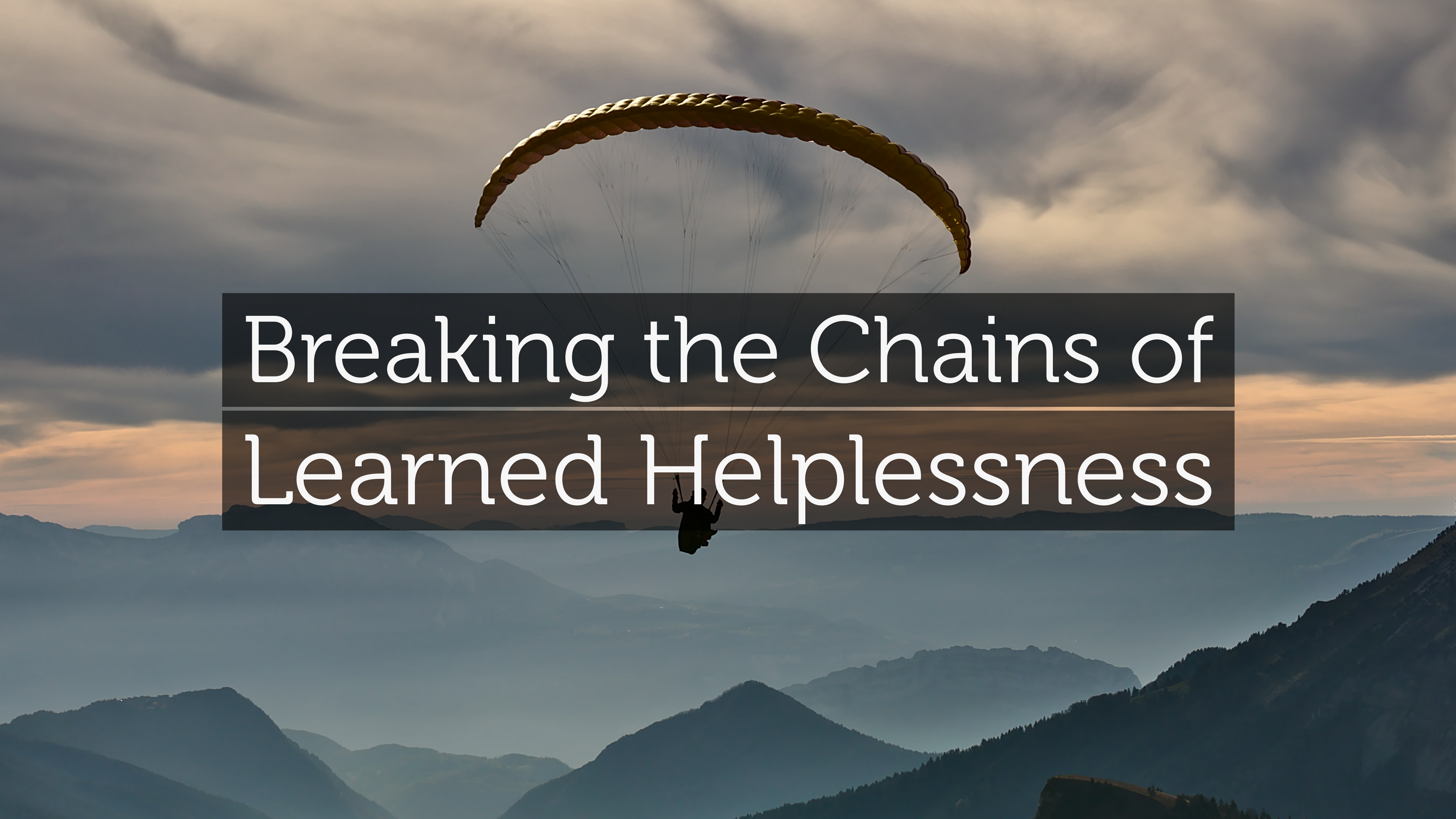Have You Ever Felt Stuck?
Maybe you’ve faced repeated failures, struggled to achieve a goal, or felt like nothing you do changes the outcome. This feeling isn’t just frustration—it’s learned helplessness, a mindset where past setbacks convince you that future efforts are pointless.
But here’s the truth: you are not powerless. By shifting your perspective and applying science-backed strategies, you can regain control, boost resilience, and unlock your full potential.
What Is Learned Helplessness?
Psychologists Martin Seligman and Steven Maier discovered learned helplessness through experiments on dogs. When exposed to repeated negative experiences with no escape, the dogs stopped trying—even when a way out was later provided.
Humans react the same way. When we experience repeated failure, rejection, or setbacks, we might stop trying, even when success is within reach.
People with learned helplessness often react in two ways:
- They give up. (“Why bother? Nothing I do will change this.”)
- They become hyperactive. (“I’ll say yes to everything, hoping something works.”)
Both responses lead to frustration and burnout. The good news? You can break free.
The Effects of Learned Helplessness
When you believe your actions don’t matter, it affects every area of life:
- Lower motivation: You hesitate to take action or pursue opportunities.
- Indecision: Fear of failure stops you from making choices.
- Mental health struggles: Anxiety and depression become more likely.
- Missed opportunities: You might avoid challenges that could lead to growth.
- Strained relationships: You struggle to set boundaries or advocate for yourself.
But there’s a way out. The key lies in rewiring your brain for action and confidence.
How to Overcome Learned Helplessness
Let’s dive into practical, science-backed strategies to shift your mindset.
1. Reframe Your Thoughts with Cognitive Restructuring
Your thoughts shape your reality. If you believe you can’t change a situation, you won’t try. Cognitive restructuring helps challenge these limiting beliefs.
How to apply it:
- Identify negative thoughts. (“I always fail.”)
- Question them. (“Is this always true? Have I ever succeeded before?”)
- Reframe them. (“I may have failed before, but I can learn and improve.”)
Example: Instead of thinking, “I’ll never get promoted,” reframe it to “I haven’t been promoted yet, but I can develop the skills and connections to make it happen.”
2. Develop Learned Optimism
Psychologist Martin Seligman discovered that optimism can be learned just like helplessness.
Try this:
- Label setbacks as temporary. (“This is just one bad day, not my entire life.”)
- See challenges as specific, not personal. (“This setback happened in this area, but it doesn’t define me.”)
- Focus on solutions. Ask, “What’s one thing I can do to improve this?”
Example: If you’re struggling to lose weight, instead of thinking “I’ll never be fit,” shift to “I can adjust my diet and stay consistent. Progress takes time.”
3. Build Self-Efficacy (Confidence in Your Abilities)
Self-efficacy—the belief that your actions make a difference—is the opposite of learned helplessness.
How to strengthen it:
- Start small. Set achievable goals and celebrate small wins.
- Learn from role models. Follow people who have overcome similar challenges.
- Visualize success. Picture yourself succeeding—it boosts motivation.
- Reframe past failures. Instead of seeing failure as proof of incompetence, view it as data for growth.
Example: If you’re nervous about public speaking, start by speaking up in small meetings. Each success builds confidence.
4. Practice Mindfulness to Stay Present
Mindfulness helps you observe your thoughts without being controlled by them. This reduces stress and increases resilience.
How to apply it:
- Pause and breathe. When negative thoughts arise, take slow, deep breaths.
- Try a body scan. Notice any tension in your body and relax.
- Observe without judgment. Acknowledge feelings but don’t let them define you.
Example: If a work project fails, instead of panicking, pause and think, “This is disappointing, but I can learn from it and improve next time.”
5. Focus on What Matters
Overwhelm leads to burnout. Instead of doing everything, focus on what’s truly essential.
How to simplify your life:
- Clarify priorities. What’s the one thing that will make the biggest difference?
- Say no to distractions. Every “yes” to something unimportant is a “no” to what truly matters.
- Eliminate unnecessary commitments. Streamline tasks and focus on high-impact activities.
Example: If you’re feeling stretched thin at work, ask, “What’s the most important task that will move me forward?” Then, eliminate or delegate the rest.
Final Thoughts: Take Action Today
Overcoming learned helplessness isn’t about flipping a switch—it’s about making small, intentional changes that build momentum over time.
Here’s what you can do right now:
- Identify one limiting belief and reframe it.
- Take one small action toward a goal you’ve been avoiding.
- Practice mindfulness for 60 seconds when you feel overwhelmed.
- Say “no” to one thing that drains your energy.
The power to change your life is already within you. The only question is—will you take the first step today?
